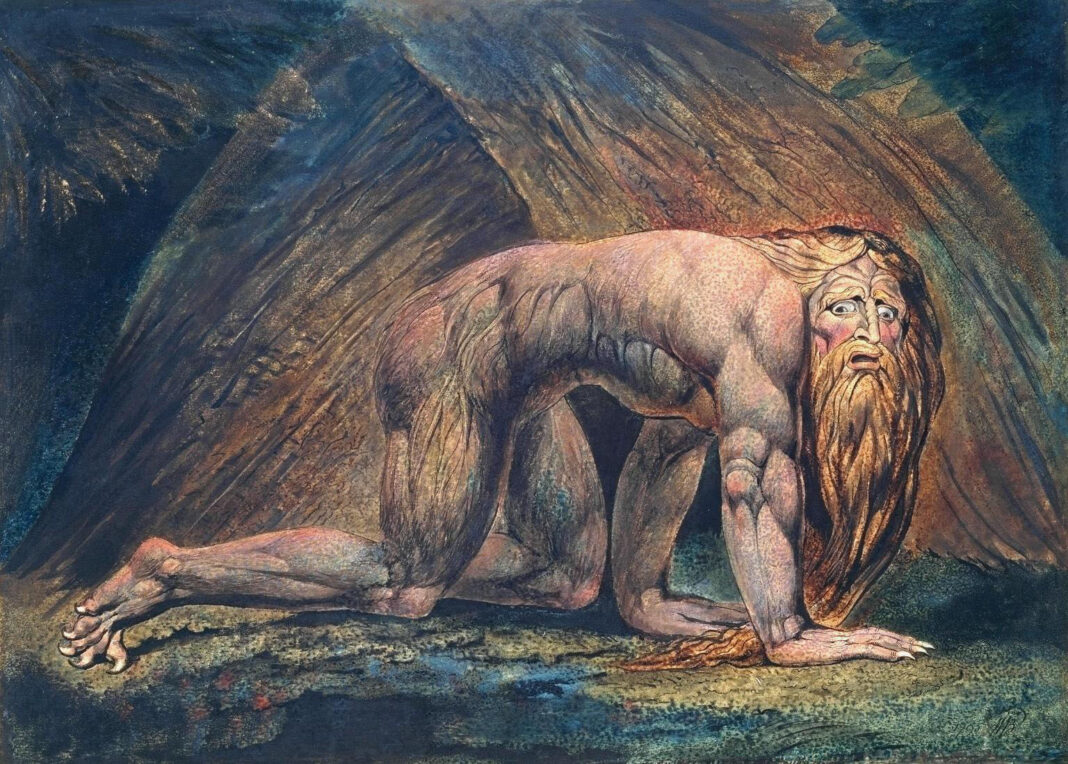Prominently featured in the Book of Daniel and often mentioned elsewhere in the Old Testament, Babylonian King Nebuchadnezzar II is a compelling character who was cruel at times and understanding at others and is the central figure in some of the Bible’s most unusual stories.
Nebuchadnezzar lived from 642 to 562 B.C. and ruled Babylon in present day Iraq for the last 43 years of his life.
Historically remembered mainly for destroying Jerusalem in 586 B.C. and moving the Israelites to Babylon as slaves, the king is also noted for putting Shadrach, Meshach and Abednego in the “fiery furnace” for refusing to worship a golden idol and for being made animal-like by God and forced to crawl on his hands and knees and eat grass for seven years because he had been arrogant.
Those stories are in the Book of Daniel and Nebuchadnezzar is also mentioned in Second Kings, First Chronicles, Ezra, Nehemiah, Esther and Jeremiah.
“The story of Shadrach, Meshach and Abednego has always signified to me that even the hardest-hearted person can be reached,” said the Rev. Nathan Headrick, pastor of Midland Church of God. “Nebuchadnezzar looked into the fire and said, ‘Lo, I see four men loose, walking in the midst of the fire. They have no hurt and the form of the fourth is like the Son of God.’
“Then he totally reversed course on what he was going to do.”
Noting the story in Daniel 4:25-35 about Nebuchadnezzar’s abasement, the Rev. Headrick said he might have been afflicted with boanthropy, which is a psychological disorder in which the person believes that he or she is a cow or an ox, according to pharmaceutical-journal.com.
“He is known outside the Biblical canon as an important king like Darius who was able to overthrow Israel and take the Hebrews into captivity,” he said. “He was a powerful guy who wasn’t afraid to be ruthless. He got mad because the Hebrews wouldn’t do what he wanted them to and he had the fire heated seven times hotter than it had ever been heated and then he brought them out and put in the people who had caused them to be there in the first place. He wanted total control.”
A successor of Nebuchadnezzar’s, King Darius the Mede, put Daniel in a lions’ den in the sixth chapter of the Book of Daniel.
The Rev. John McLemore, pastor of Belmont Baptist Church in Odessa, said Nebuchadnezzar “shows up in the most prophetic books of the Bible.
“His dreams are interpreted by Daniel and we see some of the same prophecies in the Book of Daniel that are in Revelation,” McLemore said. “Most Bible scholars believe that Shadrach, Meshach and Abednego were teenagers. They didn’t get smart or wise off. They told him that they understood he was the king and to be respected, but they would be violating the laws of their God and they weren’t going to do it. The bottom line is that the king realized their God was more powerful than him and all the gods of Babylon.
“It’s an example of what we’re to do in the modern day. There are laws passed that we should obey because they are the law of the land unless they break the laws of God. As born again Christians, we shouldn’t go out and threaten and holler and protest when laws pose a dilemma. But we should choose the laws of God even when under duress.”
McLemore said Nebuchadnezzaar was not the imperious, self-assured king that he appeared. “He was egotistical and probably narcissistic, but I think he was easily influenced,” he said.
“I don’t think it was his idea to have everybody bow down and worship the golden statue when the musical instruments played and it was probably not his idea to put Shadrach, Mechach and Abednego in the furnace. That was his jealous advisors.”




